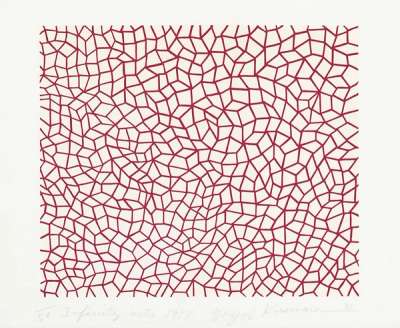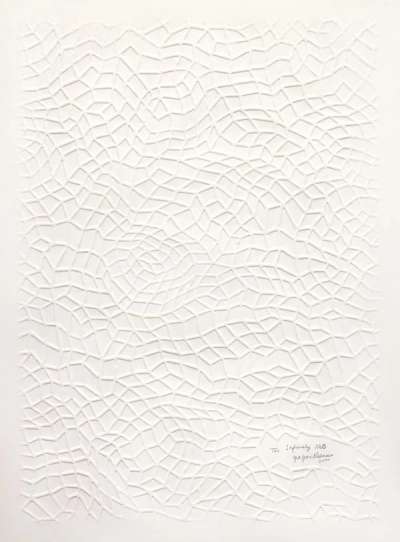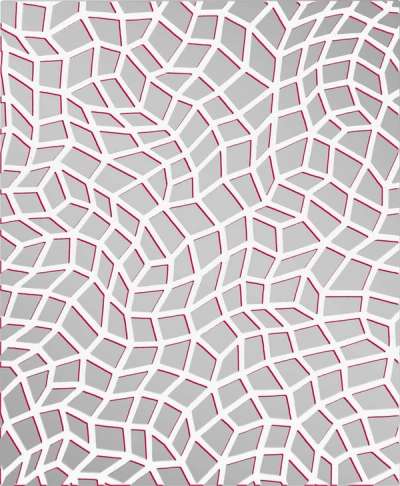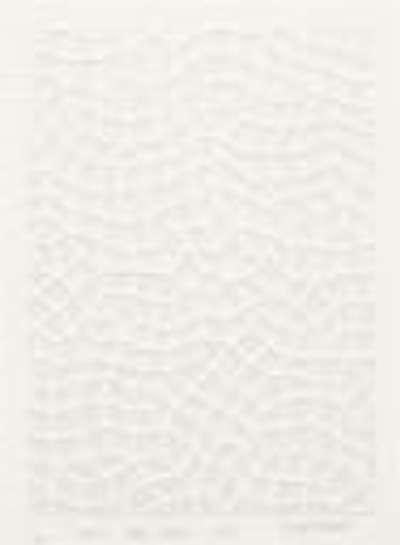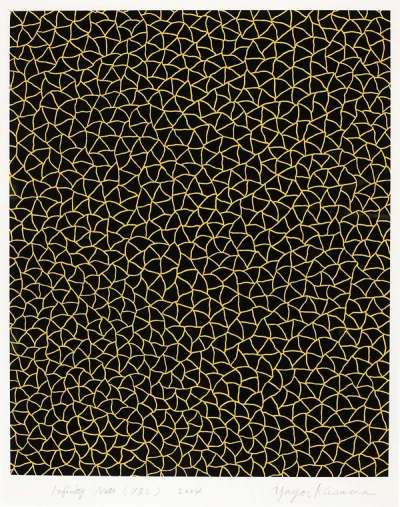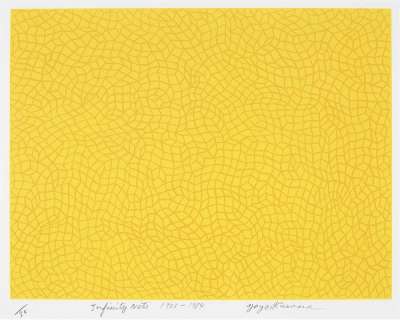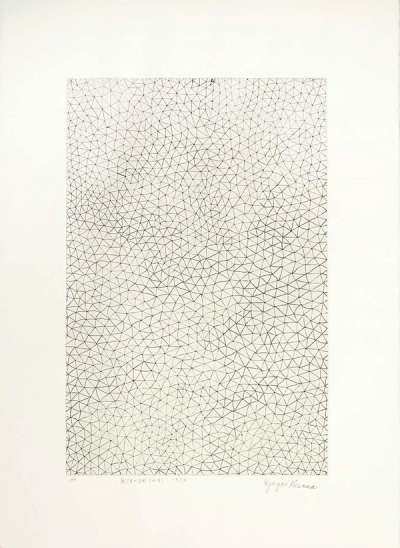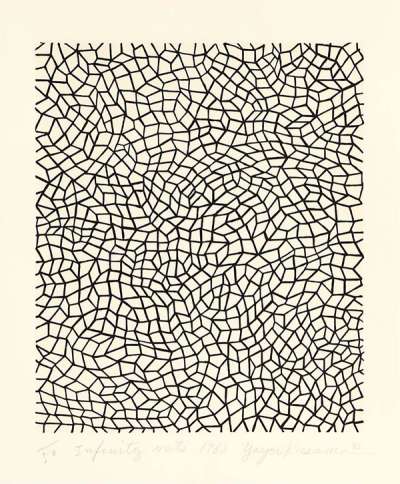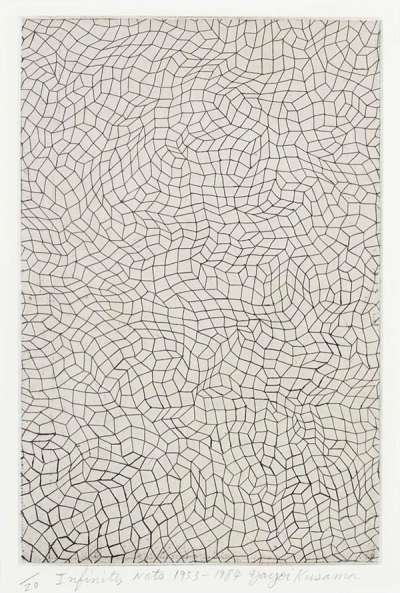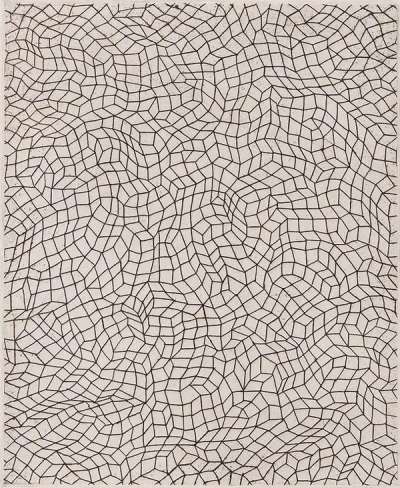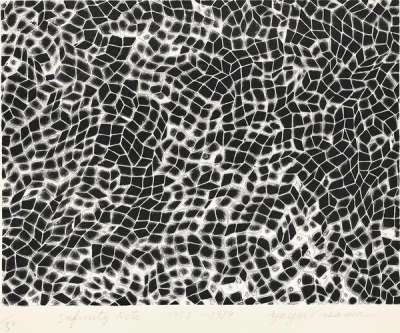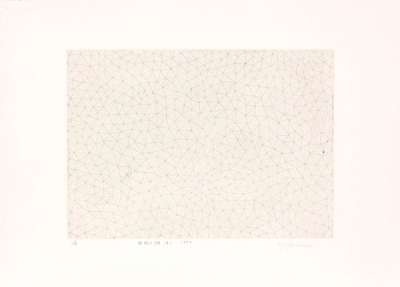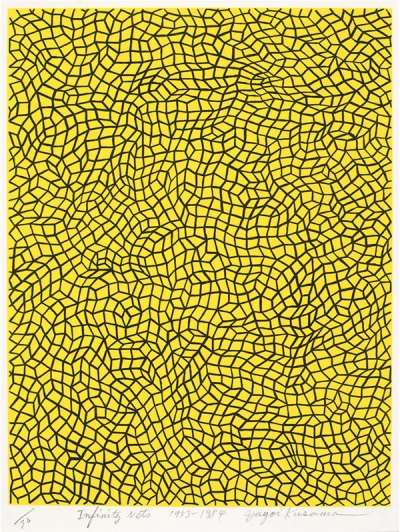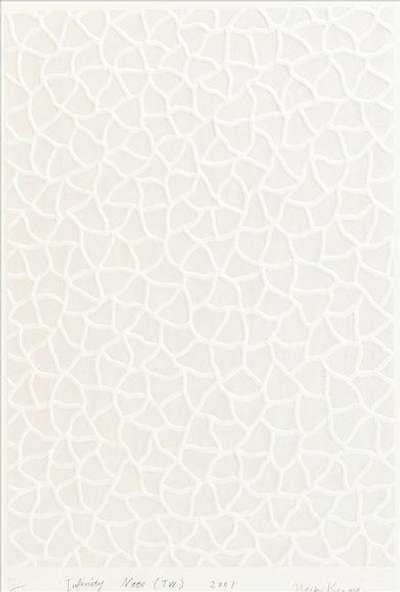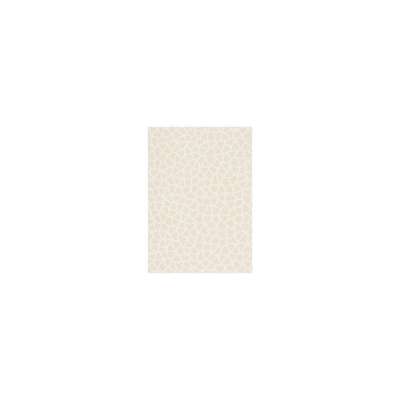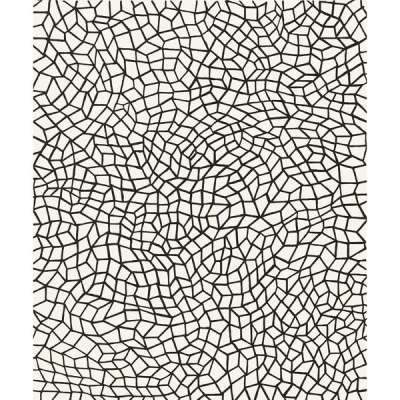Infinity
Nets
Produced as early as 1953 and as recently as 2004, Yayoi Kusama’s Infinity Net prints reflect the artist’s enduring passion for pattern, on a vast scale. Her fascination with the infinite, here expressed through grids of tessellated shape, therapeutically manifests the artist’s experiences of having obsessive compulsive disorder.
Yayoi Kusama Infinity Nets For sale
Infinity Nets Value (5 Years)
With £83269 in the past 12 months, Yayoi Kusama's Infinity Nets series is one of the most actively traded in the market. Prices have varied significantly – from £418 to £22000 – driven by fluctuations in factors like condition, provenance, and market timing. Over the past 12 months, the average selling price was £10408, with an average annual growth rate of 14.4% across the series.
Infinity Nets Market value
Auction Results
| Artwork | Auction Date | Auction House | Return to Seller | Hammer Price | Buyer Paid |
|---|---|---|---|---|---|
 Infinity Nets (YBL) Yayoi Kusama Signed Print | 1 Jun 2025 | Ravenel, Taipei | £5,100 | £6,000 | £7,000 |
 Infinity Nets Yayoi Kusama Signed Print | 26 Apr 2025 | Mainichi Auction, Osaka | £4,675 | £5,500 | £6,500 |
 Infinity Nets, Kusama 26 Yayoi Kusama Signed Print | 9 Apr 2025 | Menzies Art Brands, Sydney | £9,350 | £11,000 | £15,000 |
 Infinity Nets Yayoi Kusama Signed Print | 25 Oct 2024 | SBI Art Auction | £8,925 | £10,500 | £12,000 |
 Infinity Nets 1963, Kusama 15 Yayoi Kusama Signed Print | 24 Oct 2024 | Phillips New York | £6,800 | £8,000 | £11,000 |
 Infinity Nets (TW) Yayoi Kusama Signed Print | 20 Jul 2024 | Mainichi Auction, Osaka | £8,925 | £10,500 | £12,000 |
 Infinity Nets (A-B) Yayoi Kusama Signed Print | 29 Jun 2024 | Mainichi Auction, Osaka | £9,350 | £11,000 | £12,500 |
 Infinity Nets Yayoi Kusama Signed Print | 24 Feb 2024 | Sotheby's New York | £2,635 | £3,100 | £4,200 |
Sell Your Art
with Us
with Us
Join Our Network of Collectors. Buy, Sell and Track Demand
Meaning & Analysis
With prints produced as early as 1953, and as recently as 2004, Japanese artist Yayoi Kusama’s Infinity Net paintings were first exhibited in New York in 1959 to great success. The paintings radically reinvented the wild gestural style of other (mostly male) Abstract Expressionists, showing, by her highly meticulous, yet hypnotically expansive canvases, that other voices could produce gripping abstract artworks, too. It is not surprising then, that they have come to define Kusama’s oeuvre as a whole, influencing many of her works since. That is, even by the artist’s own account: “This was my epic, summing up all I was. And the spell of the dots and the mesh enfolded me in a magical curtain of mysterious, invisible power” (from Yayoi Kusama’s 2011 autobiography, Infinity Net, Tate Publishing).
Yayoi Kusama’s patterns, including Infinity Nets, are visually sublime, but they also serve a functional role for the artist: her repetitious painting of polka dots and other recurrent patterns is a means of coping with her experiences of hallucination, which, as a child manifest in the form of terrifying visions of bright lights, spots, and other obliterating patterns.
In print form, Kusama experiments with different print techniques and colourways in order to draw out new aspects of her pattern. Embossing some screen-prints (such as Infinity Nets, Kusama 297), the net takes on a new subtlety. The pattern becomes less decorative, and more integral when it is reduced to texture, and stripped of the bold primary colours in which Kusama usually completes linework.
This mirrors the nature of Kusama’s first hallucinations: having stared at a floral pattern, looking away she found the pattern covering every surface, expanding to decorate everything in the room. She stated "I saw the entire room, my entire body, and the entire universe covered with red flowers, and in that instant my soul was obliterated, and I was restored, returned to infinity, to eternal time and absolute space. This was not an illusion but reality itself." Though frightening and difficult to bear, Kusama treats her hallucinations with gravity, as a revelation of a universal truth, and they form the basis of her spiritual belief in the enmeshed order of the universe. The embossed prints are suggestive of this subtle, hidden pattern and arguably come the closest to representing her spiritual vision.
Meanwhile, in black and white iterations of Infinity Nets, the pattern has an almost Op-Art, Bridget Riley-esque aesthetic. These prints appear vastly different depending on the distance from which they are viewed. From a close range, the eye gets lost in the repetitive unfolding of detail and struggles to find any one point where it can rest. From further away, more dense areas of the net appear like hazy shaded patches, incidental focus points. Again, the effect of Kusama’s printing choices—choosing to ink the etching plate, silkscreen, or lithographic stone in black— supports the spiritual thesis of the work: it is easy to get lost in life’s details and overstate our individual importance, and to ignore the broader ‘scheme’ of the universe.
